Pray, listen! I give unto you another review of mine. It is, as per the challenge of Hamish Gill, Esquire, Lord of Range, purveyor of most excellent essays and sundry for her Majesty, written thusly.1 Well, well, the game is afoot then! Not a word! Into your clothes and come!
A good number of fortnights gone, a Canon AF35ML (aka, I am told, the Super Sure Shot and Autoboy Super) arrived at my domicile in a lot with another Canon, an Olympus Mju 1 and a Minolta 7000. The Olympus got some use, as did the Minolta SLR, so I found it not a displeasing proposition to try out the 35ML. As for the other Canon… spoilers!
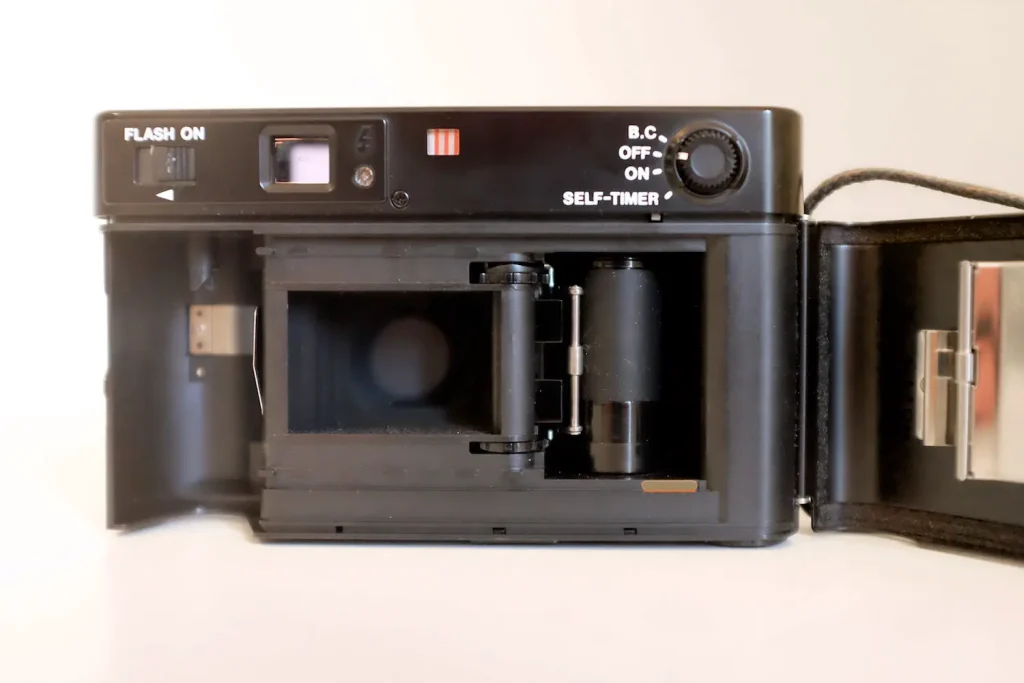
The Canon AF35ML is extraordinary in exactly one thing: it has the fastest lens you can find in an automatic autofocus point and shoot 35mm camera from the 1980s. (1981, to be exact). At least as far as my research goes, which is in this case, admittedly, not a furlough past St. Pancras Station. The lens is a super useful 40mm focal length and goes down to f1.9, and accepts 48mm filters. It appears the camera was constructed around this boast, and all other considerations that might actually make it a joy to own and operate were promptly declared unimportant by the House of Commons. The AF35ML is compact. Not lose-it-in-your-pocket compact, but small enough to bring along wherever you may want nonetheless. It’s compacter than the Minolta AF2 I reviewed for this site last year, my favorite “in between” camera that’s not a rangefinder anymore but not yet a full fledged point and shoot.
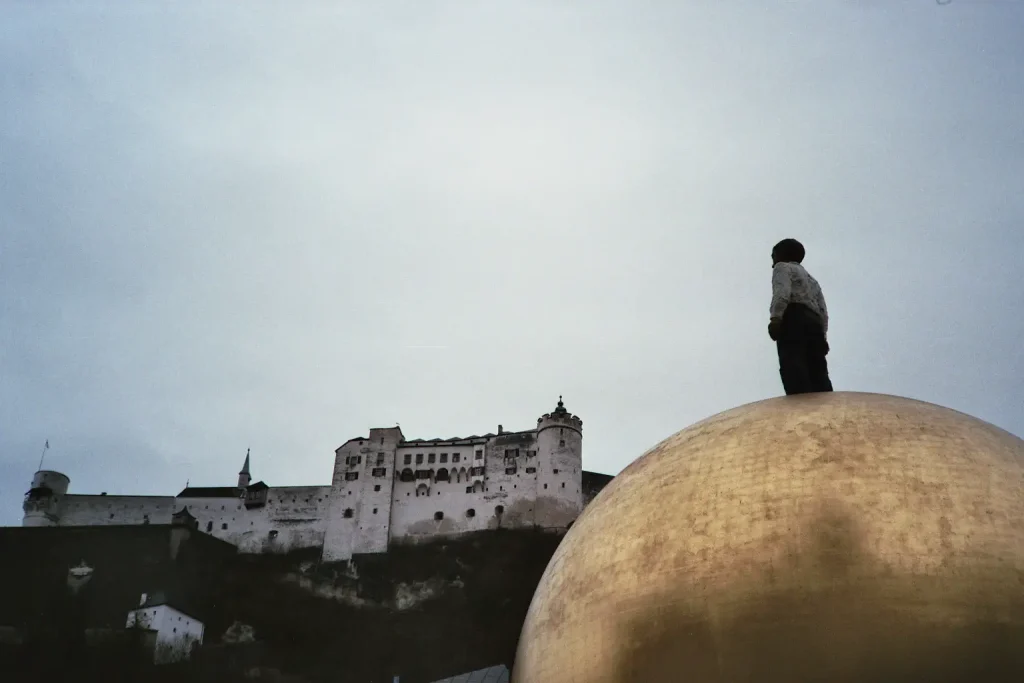
What now, of the Canon’s use for Kingdom and Empire, you inquire? As the master investigator once remarked, “Never trust to general impressions, my boy, but concentrate yourself upon details.” I so shall. The AF35ML was clearly planned to do some things well, according to relevant circumstances at its time of creation. It needed to have autofocus, automatic film wind, a built-in flash, a fast lens, a usable viewfinder, and a decent lens. It needed to operate on easy to find AA batteries, which it does. It has all these features. And though they may have made sense when slapped together in a boardroom, marketing conference, or r&d lab in late 70s or early 80s Japan, they do not anymore. That does make more than a pennyworth of difference for you today! ISO 400 film was fast for the time, but it isn’t particularly today. If you want to be able to take pictures in near darkness, you go digital. If you want to shoot film in near darkness, you use a camera that can be operated manually or will meter to 1600, 3200, or even higher. The AF35ML goes to ISO 400, and thus isn’t your number one choice for such work. (There are, apparently, versions that go to ISO 1000 – giving you a bit over a stop extra. This might change the equation. My conclusions are for the more common ISO 400 variety, used at ISO 200 and 400).

Focusing is straightforward, but as hit and miss as any of the era. Canon took a detour into passive autofocus with this one, and that may or may not make it better or worse in fringe cases. If it works, it works, but parallax error is a nuisance here, gentlefolk. Go up close and you’ll likely confuse the autofocus into producing a useless image. It’s okay for wider shots, but who wants a camera just for focusing far away? A rangefinder or SLR doesn’t have this issue. With those, you know if you’re in focus, because you have a confirmation in the actual spot where you want to focus, not just three LEDs as a rough guide.
Auto exposure is similar. It’s never terribly off – it will usually capture a picture, just perhaps not the picture you had in mind. Flash pictures turn out okay, and are actually one of the few times I saw what the lens was capable of stopped down (apologies for not including one in the review, they were of a friend unwilling to appear on stage here. Suffice it to say, they were sharp, corner to corner, and not majorly blown out). If unwanted, flash can thankfully be disabled, although if you do, be prepared to hear an annoying beeping when there isn’t enough light even for the fast lens. Which is, to surprise absolutely no one in a camera that goes only to ISO 400, often.

The viewfinder has symbol lights for focusing distance, is nice and clear, and tempts you to push the shutter button. I implore you, good Sir, do not! The 35ML will just start to whirr and distract absolutely everyone and everything, from cousin Rupert, so beautifully attired in his smoking jacket, to Aunt Clara playing Wist with the Count, to Oscar, the dog. No manners, these young upstarts, I tell you, simply no manners!
The little Canon has an on/off switch that I can only describe as daftly designed. It’s a dial that has, from top do bottom the following functions: battery check – off – on – self timer. When set to battery check it beeps loudly. Other, more aristocratic cameras, pip pip, have battery check lights instead. Also, you’re never quite sure if you’ve turned it on or set it to self timer without double checking. Who needs that kind of uncertainty for their enterprise? And when you have taken a picture, as I said: film forward is immediate, insuppressible, and loud.
Despite such inauspicious a first meeting, I journeyed, by trolley, carriage and railway, to fair Salzburg, in the German speaking part of the Austro-Hungarian Empire. Here, methought, in this capital of culture and beauty, I shall certainly benefit from my compact companion. Having done the “big” sightseeing things in Salzburg on earlier trips (that castle is something!), I took the Canon with me on simple wanderings about the old town. It was late November, so Christmas markets were already set up, and tourists milled about. Shown a hidden away small cemetery by a local, I spent some time to take picturesque pictures there as well. Salzburg should tell me much about how well the Canon would do, gentle readers.
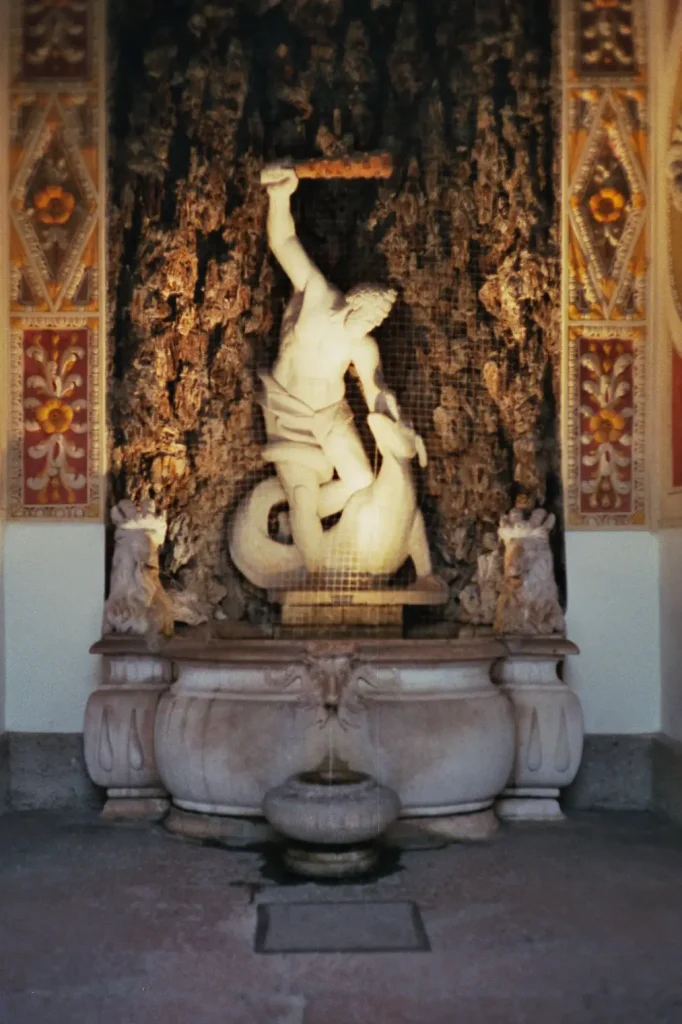
My conclusions, both of the camera as a tool and of the images it produces, were just as sobering as that first impression had been. The noise was annoying, the on/off switch’s design infuriating, the autofocus unreliable. What the Canon had going for it, back in 1981, apart from its lens specs, must have been its size. Yet a small size on a camera you don’t want to use does not make up for the fact that you don’t want to use it when you have it with you because you can, because it is small.
But, dear reader, what of the lens? Why, you paid me tuppence, so I shall deliver a riposte: It does its job well when stopped down a bit. It leads, however, to strangely uninspiring pictures in terms of color rendition. And it doesn’t need to be as fast as it is, because nothing about the camera it is attached to actually enables its use in circumstances where you really want a fast lens. The images I took at lower apertures were sharp in the center, but very soft in corners that seemed to extend farther into the middle than on most other cameras of this type I’ve used. I used ISO 200 film, but manually set the ISO to 400 for some shots that required more light. It doesn’t seem to have made much of a difference. The AF35ML gives perfectly sharp pictures at f5.6 or f8 or some such in bright daylight, but why, for the love of our estemeed Lord Nelson, would your ladyship need an f1.9 lens to shoot at f8?
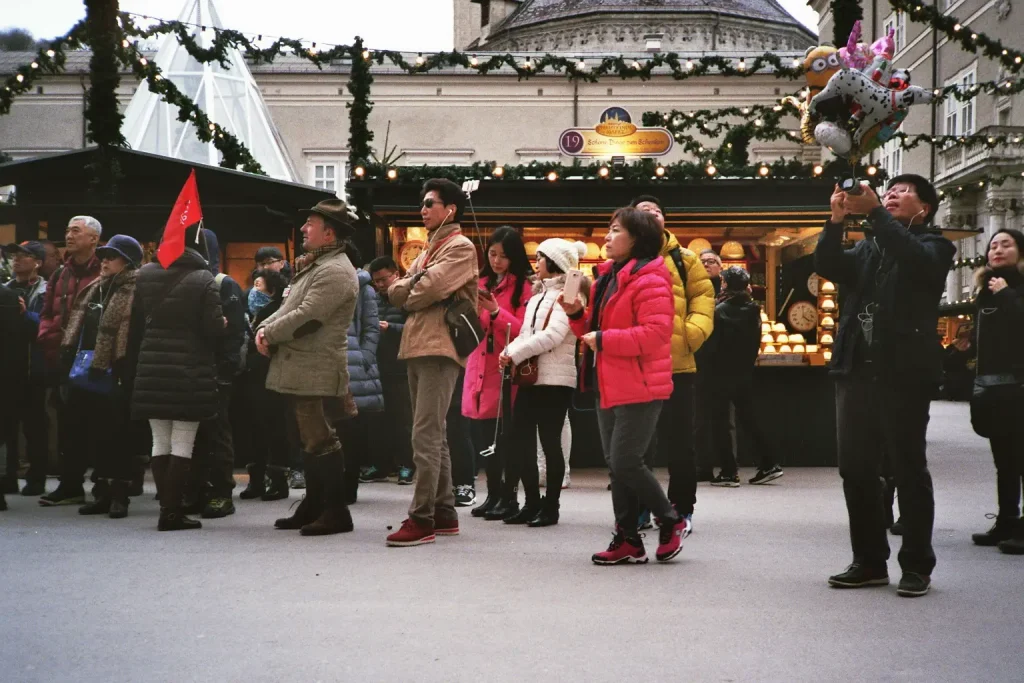
This Canon is good as a museum piece, but it’s not practical. Not because it is so much worse than any other camera, but because it has no standout function that would make it desirable over any other, and as a gesamtkunstwerk simply doesn’t gel. It is proof positive that specs should be the last thing you worry about when you purchase a camera, and usability – specifically, how you can use it to do the things you want it to do – the first. The specs are all there. They sound impressive. They are, however, sadly pointless when thrown together in such a loveless, techno-lusty but hare-brained fashion.
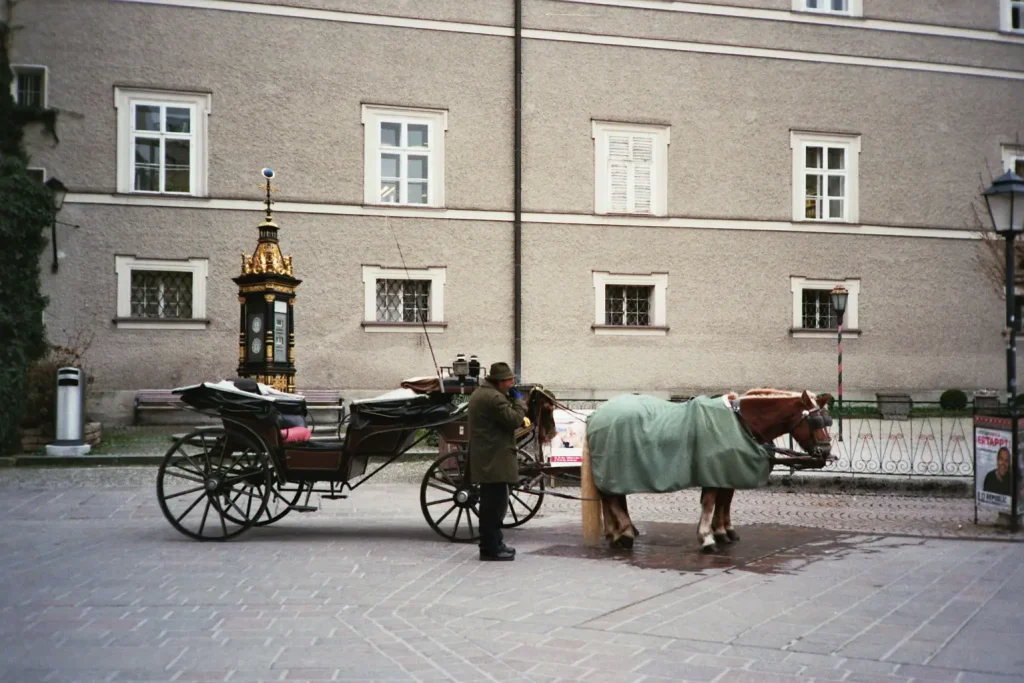
How I long, forsooth, sitting wrapped in horsehair blankets, my meerschaum pipe lit and my whisky neat, in front of yonder fireplace in the hall of Castle Gill, gentle readers, for the rangefinder this Canon should have been. Or for another generation Canon. Something sensible, with reliable autofocus, no annoying beepery, and a modicum of thought about design. Not this wannabe VCR of a point and shoot! Luckily, that’s not hard to find. Canon’s Colani-designed SLR line showed the wave of the future. In compacter quarters of our industrious if foggy capital, Olympus had a good thing going with their XA line. Minolta did odd things as per usual. Odd, yes, ma’am, but not without a certain charm. Nikon, on the other hand, hired Giorgetto Giugaro not only to design their beloved F3, but also their compact offering, the L35AF. It paid off. The L35 is sought after still.
What say I, thence, verdictly? The Canon AF35ML is a good camera to shoot and own if you already have one and no other. It is a good camera to bring to the beach, to places where it’s sunny and where you won’t ever take photos of things closer than two or three meters. Where you won’t miss it if it gets wet or filled with sand or accidentally swallowed by a school of dolphins used by the navy in defence of our fair island. I wouldn’t miss it if it just dematerialized out of the closet I keep it in. It is technically capable of nice images. Then again, nearly every camera of the same era from Canon or any of its serious competitors is.
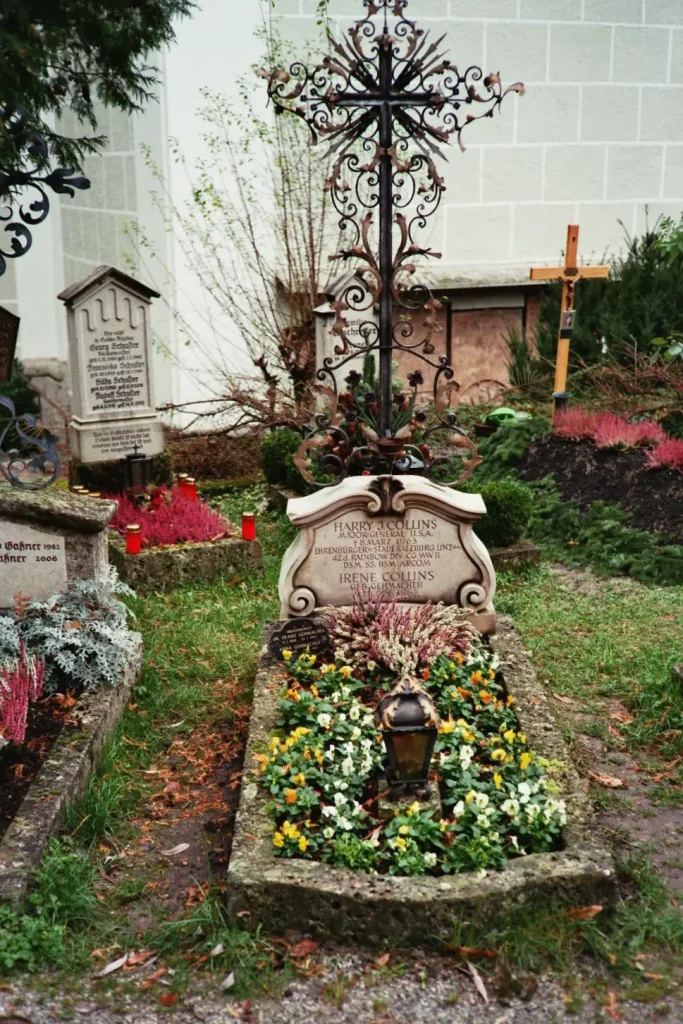
The Canon AF35ML is mostly one thing: puzzling. A “what were they thinking?” kind of puzzling. It could have been a nice small street photography camera, but it is simply much too loud for this. It might be okay for casual family gatherings, but how often, you think, will your loved ones tolerate you beeping away with the Canon, and how happily will they listen to that blasted film forward? This isn’t to knock Canon, who are after all, the people behind the F1, the T90, the AE cameras, and the fact that you can shoot video on your DSLR today. Sometimes, no matter who makes it, a product just falls through the cracks of good and common sense.
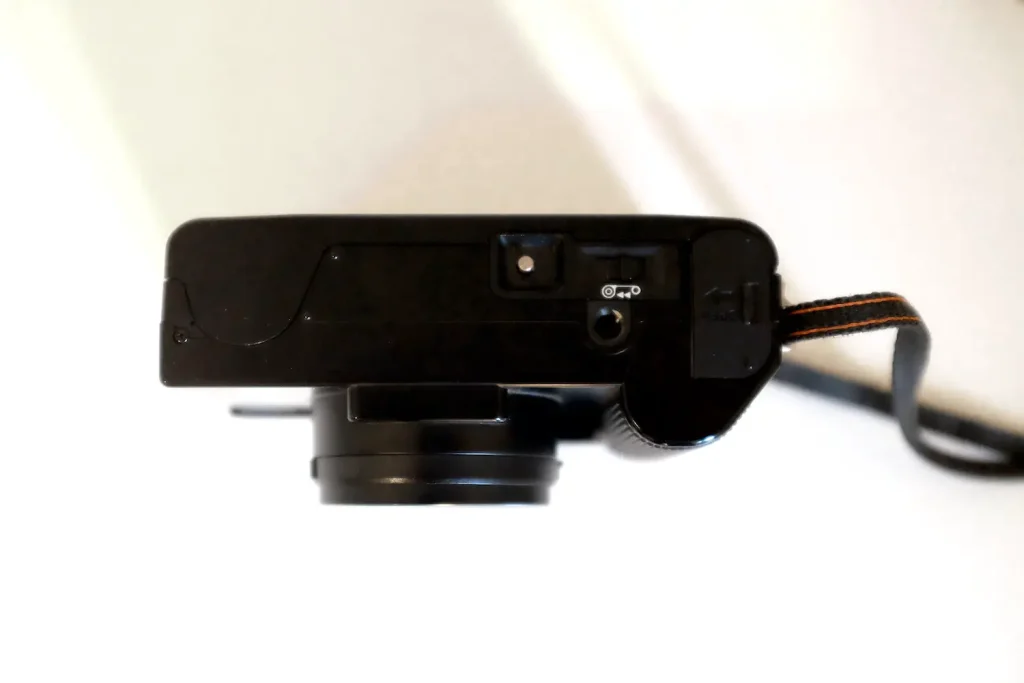
To tell the truth, my muscular Christian sistren and brethren, in a somewhat unexpected turn, the F1.9 lens, too, is more of a liability than an asset: Since the camera can go down to f1.9, it will go down to that aperture, at which the lens is pretty darn soft around the edges. And since it doesn’t go higher than ISO 400, it will go down to that aperture far more often than you’d like. As mentioned above, the only pictures it produced that ever were sharp corner to corner were flash pictures.
If you want to own the world’s fastest-lensed point and shoot for bragging rights at the Explorer Club, so old Phineas will finally be quiet about that dreadful journey of his, by Jove, proceed and acquire this contraption. If, however, you prefer to own cameras to take pictures sans unnecessary fuss, then buy a Canonet QL – an actual rangefinder. Or a Nikon L35AF. Or the Minolta AF2. Or, or, or or. Don’t buy this camera.
There’s a tide, as any member of our class has well been taught at Eaton. With the AF35ML, Magistrate Canon forgot to set their clock to Greenwich, and missed the boat.
Now Eliza, where does that rain fall?
TL; DR: The Canon AF35ML is worth but a farthing, and much like a Brontë sister, you can do better.
1. For reasons not anymore entirely clear to either of us, there came about a challenge between myself and Hamish wherein I should write this review with bits of fake Victorian English thrown in. So I did. If you are a member of the Red-Headed League, or from Hartford, Hereford, or Hampshire, I apologize in advance↩
Share this post:
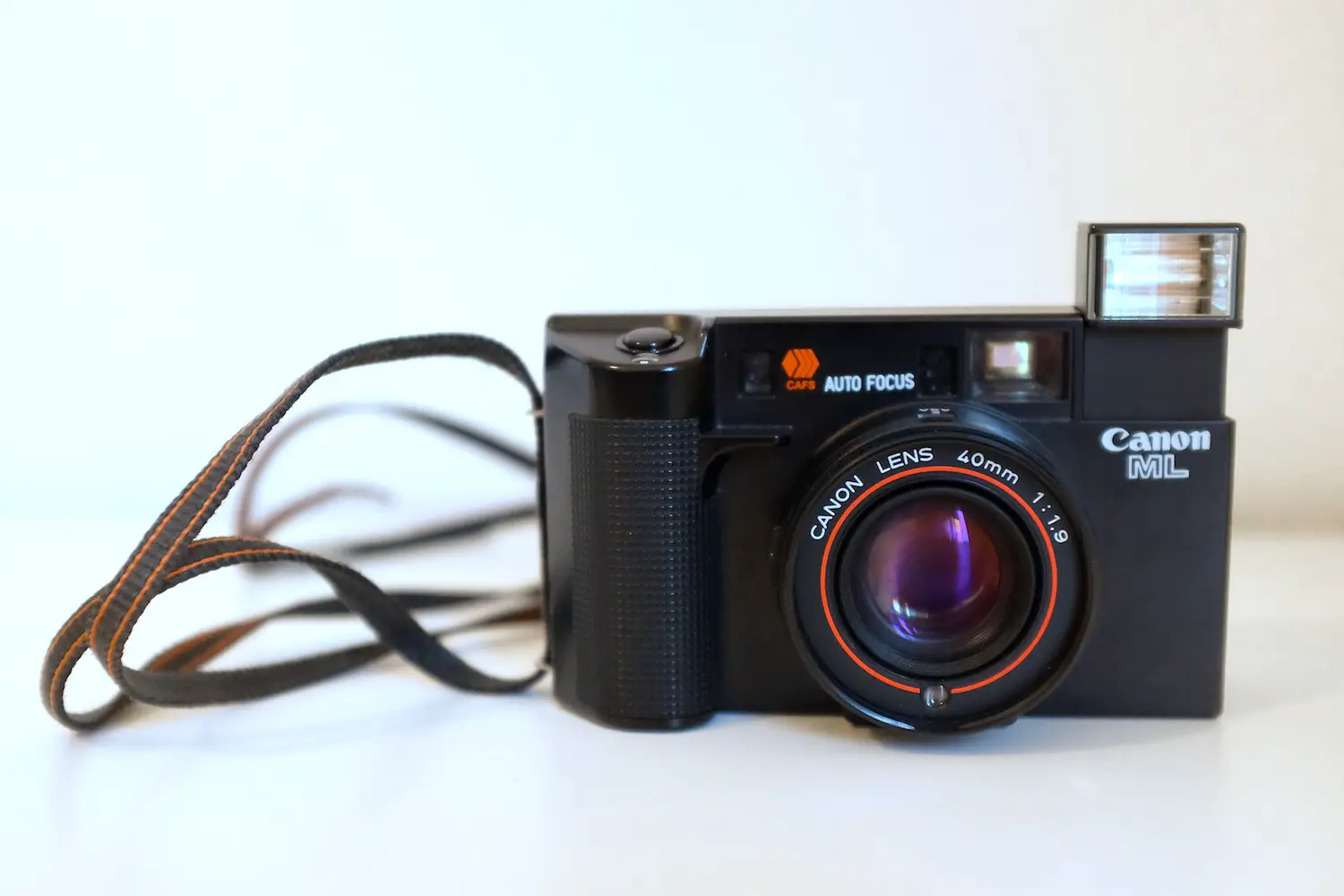








Comments
jeremy north on Canon AF35ML Review – A Curious incident – by Torsten Kathke
Comment posted: 21/01/2016
Thanks for the review.
Comment posted: 21/01/2016
Blinx on Canon AF35ML Review – A Curious incident – by Torsten Kathke
Comment posted: 21/01/2016
Take the Pentax Espio 200 (as if anyone would!). Looking at Vladimir Tichy's controversial work I wasn't intrigued by his subject matter, which is frankly a bit creepy, nor his domestic sensibilities, which make even mine look tidily austere, but by the general aesthetics of his home made telephoto cameras. Lacking the time to make something similar lead me in a very roundabout way to the Espio 200. The camera has a 48-200 lens, the longest telephoto of any compact AF film camera. I couldn't find out what the f-stop at 200mm is, but you'd need the ISO range of a Sony A7S II to get a sharp image, not whatever modest maximum film speed the Espio permits. Such anomalies are fairly typical of an era when including a superlative ("never mind the quality, feel the width" - or length in the Espio's case) was more important in sales terms than whether the technology was on speaking terms.
Anyway, nice write up Torsten, I enjoyed it. The camera, I'll avoid.
Comment posted: 21/01/2016
Comment posted: 21/01/2016
Comment posted: 21/01/2016
New Review on 35mmc – The Canon AF35ML on Canon AF35ML Review – A Curious incident – by Torsten Kathke
Comment posted: 21/01/2016
Terry B on Canon AF35ML Review – A Curious incident – by Torsten Kathke
Comment posted: 13/04/2016
I've had plenty of lenses through my hands where the edges are noticeably inferior to the centre, but does this matter in every shooting situation? Importantly, for the users of the day, this would have met their needs. And, of course, lens performance would equally be subject to how accurate the AF was, and with f1.9 on hand, not much DoF to hide slight errors of focusing. This may explain why those AF cameras fitted with f2.8 or even f3.5/3.8 lenses may have had a higher hit rate, in addition to being less optically challenging and therefore generally capable of better quality, without a doubt.
Its other attributes, I have to agree with. It is noisy, very, and can be hit and miss regarding exposure, but for the short duration I used it in anger, mine rarely, if ever, missed focus. Remember, that AF was in its infancy and it wasn't until 1985 that Minolta introduced the first AF slr and we had to wait until 1989 for the Canon Eos system.
One feature you didn't mention, though, is what the red and white striped thing is for on the rear top plate. Even though the camera will auto wind to the first frame, the camera could still give the impression it was loaded correctly, even though the film leader hadn't been caught on the take up spool securely. If everything was OK this little indicator would "wobble" as the film advanced. If it didn't, one could safely open the camera back and have another go.
Comment posted: 13/04/2016
Terry B on Canon AF35ML Review – A Curious incident – by Torsten Kathke
Comment posted: 14/04/2016
I agree with all your points. The ingenuity of camera designers never ceases to amaze. You only have to look at cameras such as the Bolsey C to wonder what on earth was in their minds. I'd love one, by the way, but sometimes magnificent failures can be interesting in their own right. The AF35ML certainly must rank as one of them.
Torsten Kathke on Canon AF35ML Review – A Curious incident – by Torsten Kathke
Comment posted: 14/04/2016
Comment posted: 14/04/2016
Comment posted: 14/04/2016
Comment posted: 14/04/2016
Comment posted: 14/04/2016
The Canon AF35M: Making Mere Adequacy Intriguing Somehow – by Torsten Kathke - 35mmc on Canon AF35ML Review – A Curious incident – by Torsten Kathke
Comment posted: 03/08/2018
A Latenight Review of the Fuji Natura Black - By Marcus Harris - 35mmc on Canon AF35ML Review – A Curious incident – by Torsten Kathke
Comment posted: 18/01/2019
Witold on Canon AF35ML Review – A Curious incident – by Torsten Kathke
Comment posted: 02/06/2020
Comment posted: 02/06/2020
Ben Townsend on Canon AF35ML Review – A Curious incident – by Torsten Kathke
Comment posted: 13/08/2021
The soft corners are due to exceptionally high field curvature - if you focus on something ten feet away, objects which are 50 feet away in the corners will also be in focus! You can actually get reasonably sharp corners at f/1.9 if you focus on them. But that's not actually useful, especially in the original AF body.
The original combined aperture/shutter was behind the lens, which is perfect for me since my 3D printed waterhouse stop also must go behind the lens. This makes it vignette more than I would expect for the size of the elements, as it isn't the ideal location at the center of the lens assembly.
I suspect that because the aperture is behind the lens, they needed to design it to be highly asymmetric for a 40 mm lens, with much smaller elements in the rear. I theorize this is the culprit for the high field curvature as well.
It's reasonably sharp (microcontrast) at the center at f/1.9, but low macro contrast which limits the ability of images to pop with contrasty subjects and soft backgrounds. I think that's why the photos in this review don't amaze as much as a 40mm f1.9 seems like it should. If you stop down to around f/3.5, center contrast improves immensely but far corners are still mushy. If you stop down more, as the review notes the corners are tamed a bit, but then you could be using any lens.
So in conclusion, this is not actually a very good lens for the original body. It is however a fun, fast, and VERY light lens to use on a mirrorless digital body where you can control aperture, have a live preview to avoid the pitfalls of very high field curvature, and can compose to minimize the effect of the corners. The niche for this lens is portraits at f/2.8 or f/4.
Comment posted: 13/08/2021